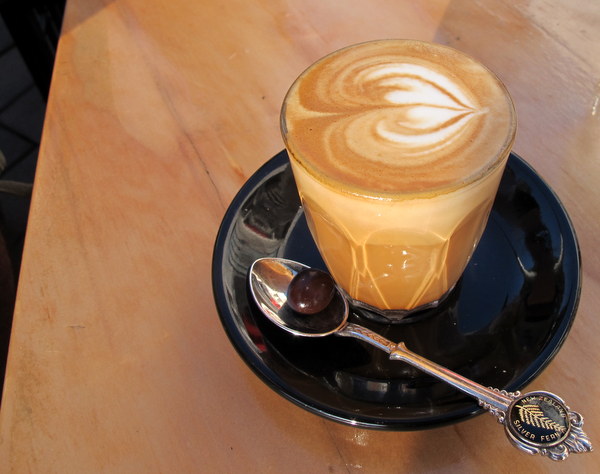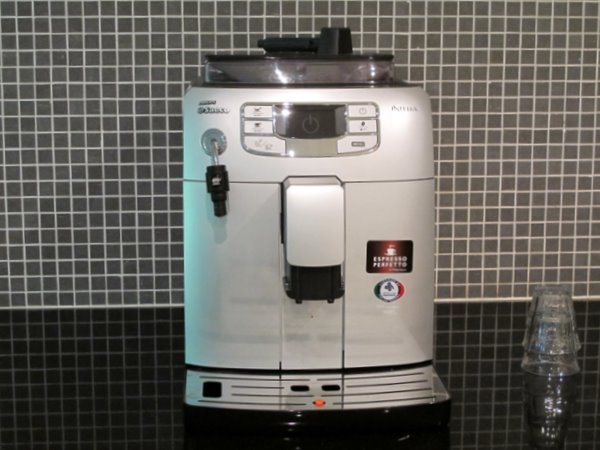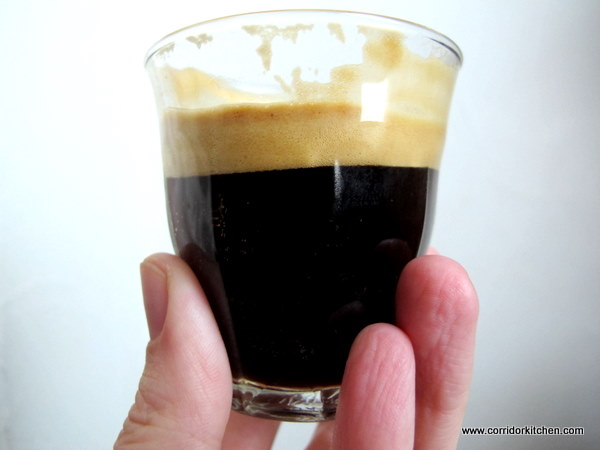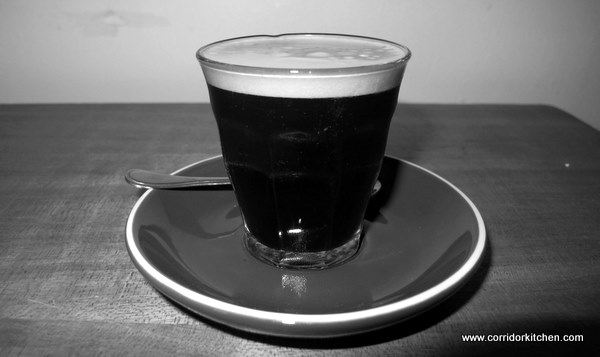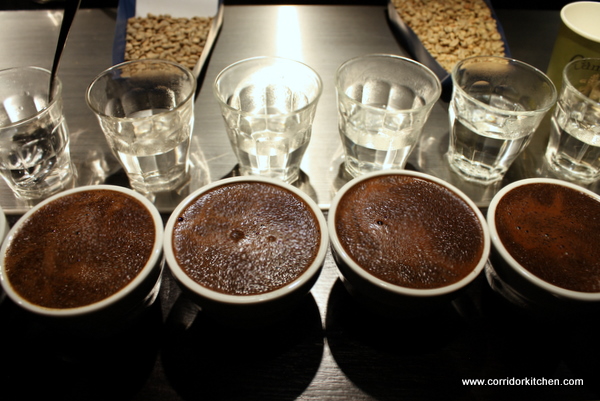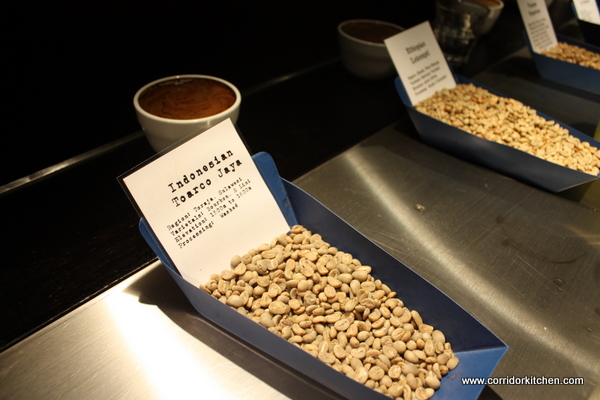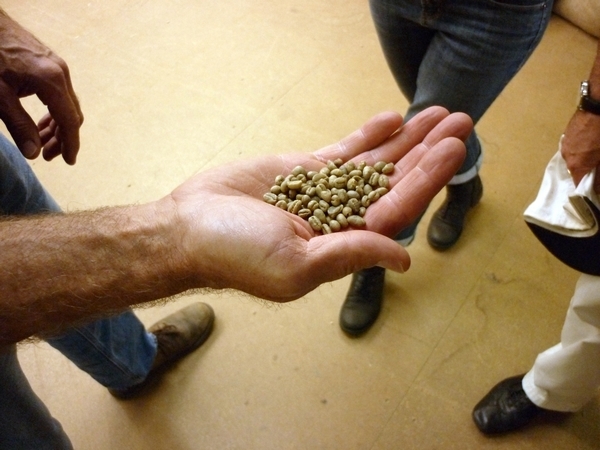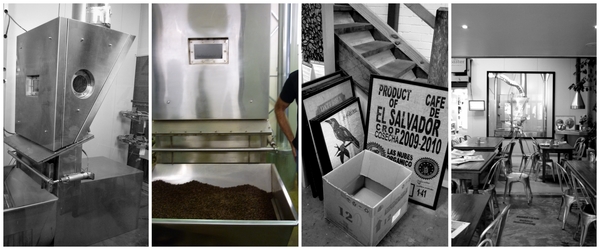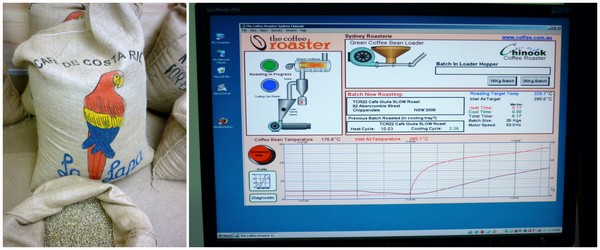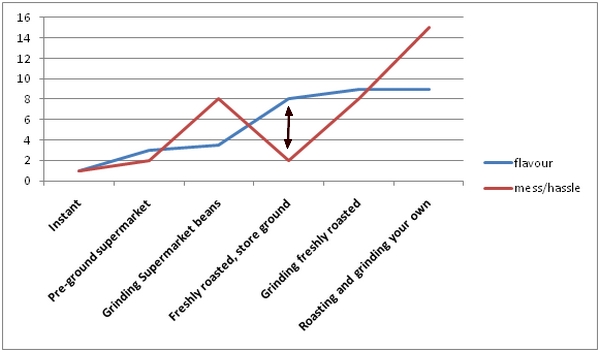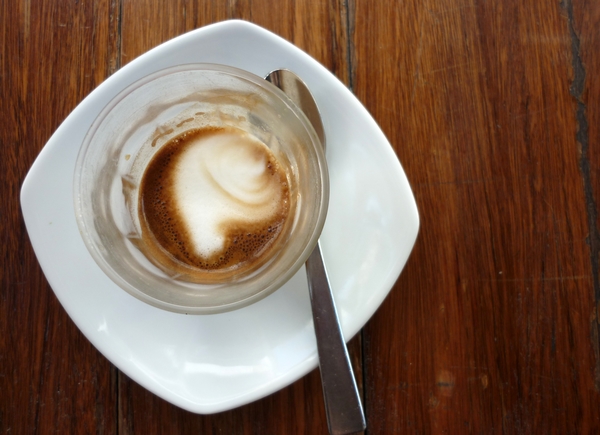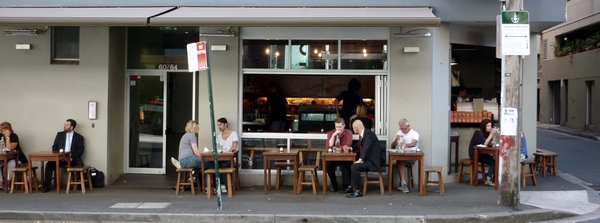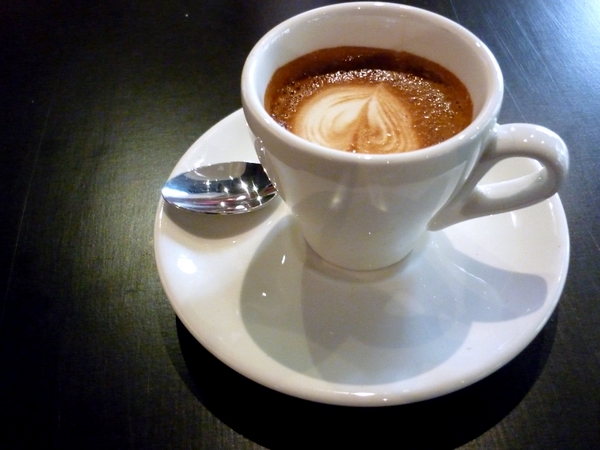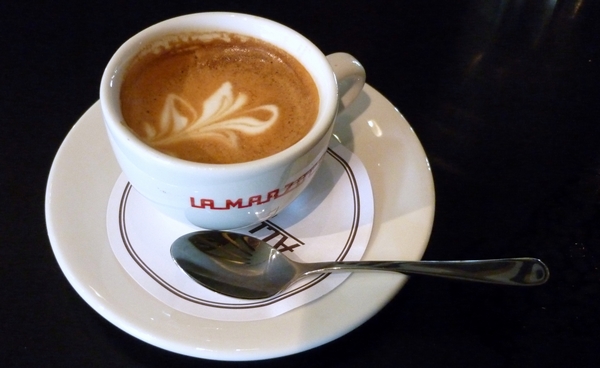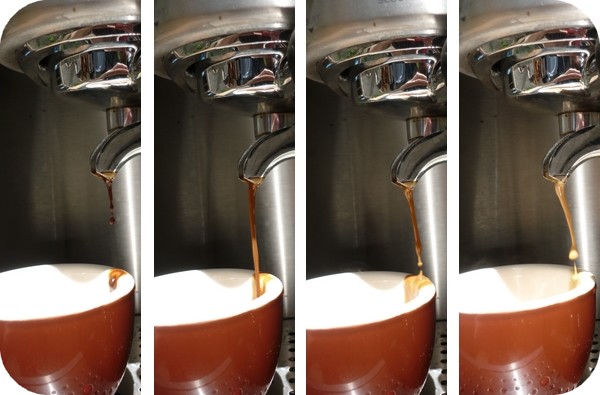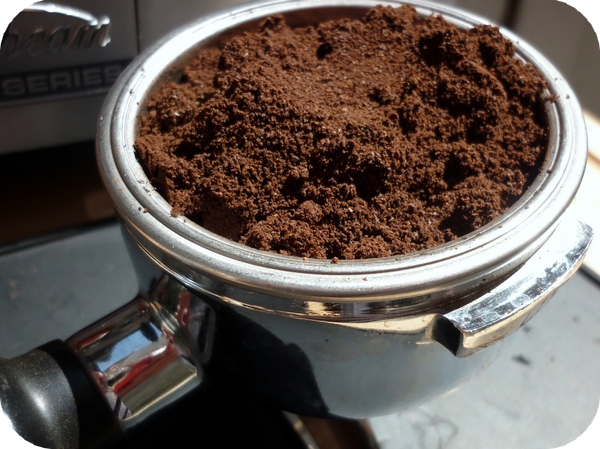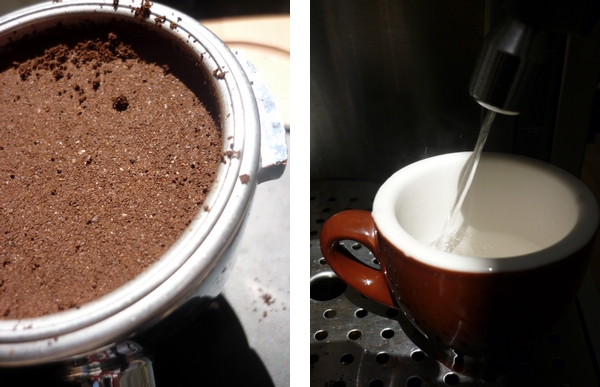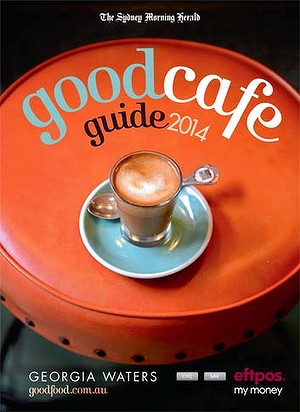When I go out for coffee, I’m looking for something specific. I have my preferences and my pet hates. For example, I almost always order a macchiatto, eschew takeaway cups wherever possible, and I don’t take sugar. These preferences colour my reviews. They inform what consitutes a good place to get coffee, for me.
Recently I’ve had some feedback from y’all that some of the places I’ve loved aren’t always up to scratch for you or you’ve had a less-than-brilliant experience at one of them. And I’ve realised I need to dig deeper into what makes a good coffee place (notice I didn’t say ‘what makes a good cafe’ as that’s a whole other kettle of fish).
When I wrote about Allpress in Auckland, for example, I was with a friend who drinks a large skim coffee with equal. This place doesn’t have large cups. Or skim milk. Or equal. This is something I never would’ve known if I’d gone by myself- I was just fine with my macch.
So I’m throwing it open to you, dear reader. I want to know what YOU look for in a good coffee place. You can answer this either in the comments section with a lengthy ranty answer, or by filling out the survey below. The results, assuming they are conclusive, will for the basis of a checklist I’ll use, not necessarilly to JUDGE a coffee place, but to inform you guys about it so that you can make up your own minds.
So whaddya reckon?
To complete the survey below, just hit ‘next’ after every answer and ‘submit’ when you’re done. There are 10 questions in total.
What makes a good coffee place?
So around a month ago I was offered the chance to try out the new fully automatic espresso machine from Philips Saeco – the Intelia, which was handy as my ever faithful Sunbeam had been playing up. I’m skeptical when it comes to automatic coffee machines, not least because I’m a control freak bus also because I just can’t see an automatic machine living up to a hand-tamped coffee.
After three weeks of using this machine daily, I now feel qualified to review it. I thought the best way was to show you the machine in a kind of how-to video of about 12 minutes. I’ve followed that up with a summary of what I like/don’t like about the Philips Saeco Intelia, skip straight to that if you’re after my final verdict.
The Philips Saeco Intelia
embedded by Embedded Video
YouTube
What’s to like?
The convenience – once you’ve got it all set up, it’s just a matter of pressing a couple of buttons, especially if you drink black coffee.
It cleans itself (although you still need to clean it periodically)
You can use beans or ground coffee
Everything is adjustable and programmable
It’s quiet!!
There is almost zero mess.
Usually the coffee grounds receptical is full at the same time as the water reservoir is empty
The milk frother – remove the ‘cappucinatore’ for velvety-smooth foam
What’s not to like?
The price – RRP $999
The small water tank/coffee ground receptacle – they always need to be filled/emptied (in fact, the water tank seems to need to be filled BEFORE it’s empty…)
There’s no substitute for human tamping – even at the finest grind and largest dose, the shots run a tad too fast for me*
The plastic casing feels cheap and flimsy – nespresso-esque.
The steam wand (used manually especially) makes a mess.
The drip tray is too small
Quibbling/Suggestions
It’d be super cool if you could use the internal grinder just to grind coffee (not for use in the machine).
This product is for…
Office kitchens, people who want something better than nespresso but with even less fuss, those who drink milk coffee (it doesn’t quite stand up to espressos/ristrettos), someone with more money than sense.
The Final Verdict
I was skeptical about the ability of a fully automatic machine to produce a decent coffee, however I have to admit that the Phillips Saeco Intelia has grown on me.
It gets massive points for convenience and usability- it’s very intuitive to use and quite straightforward.
However, to get a decent coffee out of it, it really needs to be properly adjusted. That said, I use it on its finest grind setting and maximum dose, and the shots just aren’t coming out as slow as I’d like.
Using freshly roasted beans gets the best result. If you can’t get them, I seriously wouldn’t bother with this machine.
Finally, like a lot of kitchen gadgets, it is priced that little bit too high. That said, I have the Sunbeam EM6910, which retails for around $700 and I would never, ever pay that – I got it at a factory outlet half price.
This is product I would never purchase for myself, but I can understand why someone who didn’t want any fuss or mess and wasn’t addicted to espressos or macchiattos would.
*(for those who don’t know – higher dose of coffee = slower shot pour and thus more concentrated shot, as does a finer grind. Coarse ground coffee will pour slower, which makes sense if you think about water running through a sieve full of rocks vs a sieve full of sand).
Keep an eye out over the coming weeks for an exciting competition on Corridor Kitchen. You’ll never (as in always) guess the prize!
A while ago while visiting Don Campos in Alexandria, I noticed a sparkling long black on their menu. I’d always wondered what it was and how it was made, but of course I didn’t do anything as obvious as to ask what it was or better yet, order it. It remained an elusive espresso mystery.
I’d pretty much forgotten about it until I visited the Cupping Room a couple of weeks ago. I asked Todd who was hosting the session what it is and he said it basically a frozen latte glass containing a ristretto topped up with iced mineral water. It’s a cooling summer coffee for those of us who aren’t so fussed on the creamy, milky or sweet iced coffees you usually come across.
I know it’s not warm here right now but it must be somewhere so I decided I’d post it again before I forget. Todd recommended a piccolo/short black glass rather than a latte glass so that’s what I used.
The flavour was mild and refreshing and actually, it makes a lot of sense when you think about it when I think back to the terrible espressos I had in Argentina and how they always came with a tiny glass of mineral water to soften the blow. The sparkling long black is no longer on Campos’ official menu so ordering it is likely to elicit some raised barista brows…
embedded by Embedded Video
Sparkling Long Black
An espresso machine
A frozen cup/glass
Freshly ground coffee
Sparkling mineral water, chilled
Run a shot of about 15 ml of espresso into the cup or glass. Top with chilled mineral water. Serve.
So, is there a drink you’ve been dying to try?
While it might be a common occurrence for other food bloggers, it’s not usual for me to receive invitations to, well, anything. So when the folks at Campos asked me if I’d like to come check out The Cupping Room above their flagship store in Newtown, it’d be an understatement to say I was excited, especially since it had been on my to-do list since forever.
When I arrive at 5 to 3 on a Saturday, it’s hot and crowded and I can’t move for the customers. I’m not surprised, it’s one of the reasons I don’t come here that often, but when my partner in crime arrives, she’s shocked. ‘It’s as if there aren’t any other coffee shops in Newtown,’ she marvels. Well, for some, that may be true. We elect to wait outside. 10 or so minutes later we’re led through the crowd to the back of the store, up the steep stairs lit by a single dangling light bulb. Like an old-time speakeasy, a panel in the door slides open and a pair of eyes peer out. ‘Two?’ Asks a voice. We nod. We enter.
The space is pitch black save for a long wooden table, stainless-steel edged and lit by a line of spotlights. Our host, Todd has laid out 6 small bowls of coarsely ground coffee for each of us to ‘cup’ or taste. Cupping, he explains, is standard practice for roasters all over the world. The idea of cupping is that because you’re removing all the variables inherent in brewing coffee, you’re leveling the playing field and you really are just tasting the coffee. Each step of the cupping is usually given a score and that’s how a coffee is chosen by buyers.
Latte glasses of water and metal spoon glint in the light as Todd explains the process. The first step, he says, is smelling each grind. We inhale each cup (well, not literally, but you know what I mean) and leave the descriptions to the expert. Next, Todd lets the coffee steep in 93° water for 7 to 15 minutes. We then break the ‘crust’ of grounds that has formed on the top, careful to expose rather than destroy the crema. Once we’ve ‘crusted’ each cup we are to taste each one in turn without speaking – this is the time to form our initial impression. Each coffee must be taken with a single, sharp sip from our spoon. Todd makes a loud definitive ‘slurp’ with his, practically inhaling the brew but we’re more timid.
Afterwards we take our time though the 6 grinds, which have been set up in a very deliberate order, and we discuss the flavour profiles of each one. Todd says there’s no wrong answer here and encourages us to describe the coffees. I find this very difficult to do, but as soon as he mentions a flavour, for example ‘citrus’ or ‘earthy’, I find his description fits what I’m tasting, and it’s more than just the power of suggestion.
The coffees we taste are:
Indonesian Toarco Jaya – a solid, well rounded base.
The Ethiopian Lekempti – fruity, lemony. Yum!
Panama Emporium – I’m not sure how to explain this, but I don’t like it. It reminds me of that nauseous feeling of having had 5 or 6 coffees.
Colombian el tiestro –I liked it but I don’t remember much else about it.
Kenya Gethumbbwini – Very strong and zesty, like lemon peel.
Supermarket coffee – tastes like nothing.
Campos cups a variety of beans every day in their warehouse to maintain the consistency of their signature blend, ‘Superior’. They will roast on a Monday, cup in a Tuesday and adjust the ratios accordingly on a Wednesday, and this cycle continues each day. Visiting coffee plantations and tasting their crops has been recreated in a much more pristine and theatrical setting here at the cupping room. I ask what coffee producers would think of their gleaming setup and he admits they’d probably find it pretty bizarre.
The Cupping Room
193 Missenden Road,
Newtown NSW 2042
(02) 9690 0294
Sessions Tuesday to Friday at 7:30 and 2.00pm
Saturday’s at 8:30am, 1:00pm and 3:00pm
I have my Mum’s family to thank for my love of coffee. When I was a little kid, I loved eating a spoonful of froth off my mum’s once-a-week cappuccino after the grocery shopping. Then later, one by one, everyone bought espresso machines. When I was 16 I started drinking coffee in earnest, careful not to overdo it. Never more than one a fortnight, I vowed. Then I got my first job of any consequence at a coffee shop and became fascinated with the process of coffee making. How could I get my cappuccinos as good as Milan, my Serbian boss? That was it; I was hooked on coffee. And now I’m traipsing all over, looking for the best coffee I can find.
So when my aunt suggested the coffee roaster for a family get-together, I was more than happy to oblige. And when the owner Dan Fitzsimmons (a friend of my aunt’s) offered us a tour of the roasterie, I was excited. Another step in the coffee-making process revealed.
The Coffee Roaster was one of the first of its kind in Sydney, pretty obvious when you see their web address, www.coffee.com.au (don’t worry; the website is going to be updated soon). We go upstairs where the unroasted beans are stored and poured into the roaster. Dan starts by explaining how the coffee is stored in hessian sacks but says that there’s an increasing trend towards plastic liners and that it’s important to get as much of the dust and dirt out of the coffee as possible prior to roasting.
The coffee roaster uses a computer-run Chinook air flow coffee roaster which basically means the beans are roasted on a cushion of air. The system is computerised, and each roast is saved as a file which has been optimised in terms of a variety of variables (temperature, length of roast etc.) for the individual blend or even the individual coffee shop they are supplying. He contrasts this with other roasters who roast each batch more by sight, saying that he prefers about his method as once each coffee profile has been established it makes no difference who is in charge of the roast, they will just download the correct file and thus the result will be consistent.
Dan pours some beans into the roaster and selects a profile, the TCR22 for Café Giulia in Chippendale, a long, slow roast. Dan explains that this will cut out the acid or caramel notes and lead to a darker finish where a faster, hotter roast would leave you with a lighter, more caramel finish.
We move downstairs to watch the roasting process, and Dan contrasts The Coffee Roaster’s method with that often employed by roasters. Usually they’ll have around 6 blends roasted 6 different ways, and will have one person roast, store and top-up as needed while another person fills orders with them. He, on the other hand is storing the unroasted beans until orders are placed. Customers like café Giulia call up the day before they need a fresh supply and Dan and the team will roast the batch the next morning and deliver it immediately. The whole process is surprisingly quick; they can roast about 4 batches an hour. As the coffee cools he shows us the dust removed via the roasting process – a whole bin full!
On storing coffee – a hotly contested topic in barista/roaster circles – Dan says that they package their beans as soon as they have cooled in a bag which lets excess gas out but does not let oxygen in. Every time you open it you are letting in microbes and yeasts which feed on the coffee and quicken its expiry, so he recommends storing coffee in a vacuum seal container where you can suck all the air out, or in the same kind of bags they use, so you can squeeze it out. Keep your coffee out of the light and don’t worry about putting it in the fridge or freezer – you will just be refrigerating/freezing stale air. And his number one storage tip? Use your coffee up as fast as possible because as soon as it’s roasted it begins to deteriorate.
What obsessions run in your family?
The Coffee Roaster
380 Botany Road,
Alexandria NSW 2015
1800 806 200
www.coffee.com.au
I have a shameful secret to reveal. I don’t grind my own coffee.
Being a barista (well, not right now), this has sometimes led to a questioning of my coffee expertise, something along the lines of ‘Well, if you can’t taste the difference, I guess it’s no big deal.’ Oh, clever, I see what you did there. A little passive-aggressive jibe not at only my expertise, but at my actual sense of taste! Nice one. Then there’s the more overt ‘how can anyone who doesn’t grind their own beans know anything about coffee?’

Actually, I know great deal about coffee, definitely more than nothing. And it is this knowledge, along with my own personal circumstances, that has led me to drink it the way I do. First world problems, eh? Here are the 4 steps of reasoning that lead me to believe a grinder is not for me.
1. The ‘scale of flavour’ is a myth
Firstly, I call into question that there is one perfect coffee bean out there that, when perfectly ground and extracted, will yield perfect results for everyone. It has been proven that the majority of people like a light, caramel roast and there’s also a chunk that prefers a dark roast, so that in itself blows that idea out of the water. But let’s take a look at this imaginary scale anyway:
The perfectionist’s scale:
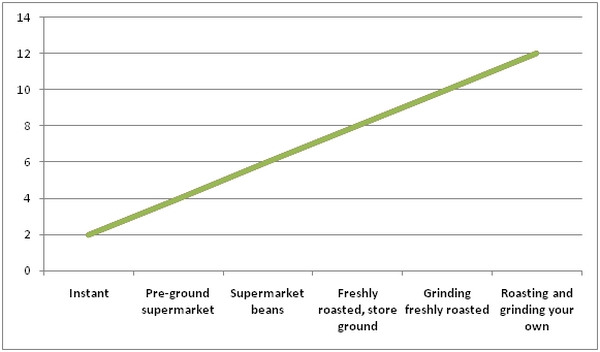
Now I have a billion issues with this graph. First, if this were the scale, how would the coffee machine factor in? What if you used French press, a $100 espresso machine, a $1000 espresso machine, stovetop, hot water, cold water extraction, syphon… the list goes on. What about skill? What about mistakes? What about how much coffee you have to throw out whenever you grind it wrong? There are too many variables, so let’s just look at two – flavour and mess/hassle.
2. Flavour vs. Effort. That’s my scale.
In this diagram, the blue line represents flavour and the red line represents mess/hassle.
Notice I’ve given pre-ground supermarket coffee a 2 for flavour, store-ground boutique coffee an 8 for flavour, and boutique beans a 9. So you’d think the beans are the natural choice. But not so, because grinding beans has a mess/hassle score of 8 which is quite high, where getting a store to grind it with a commercial grinder is a 2. What I’m looking for is a large gap between mess/hassle and flavour, with flavour at the top. Thus, store ground boutique coffee has a score of 4 (8/2) and boutique beans get 1.125 (9/8). That’s my reasoning.
3. I have skills, I don’t need gadgets.
The truth is I don’t need a graph, but I drew it to make a point- there is not an absolute value for flavour. There are standards. There are better methods and worse methods. But there is also what works for you. At the end of the day, I don’t own a grinder because it just isn’t that important to me, and I’m drinking much nicer coffee than a lot of people who do. It’s my theory that just as a poor tradesman blames her tools, a poorly skilled one buys fancy tools to make up for that lack of skill. And it doesn’t work.
4. Other factors
Of course there are other factors. The fact that I live in inner-city Sydney, surrounded by coffee roasters and great cafés is one of them. The fact that I am a trained barista is another. A kitchen the size of a built-in wardrobe is another – there’s no space for a grinder. And there’s a whole other issue as well, which is that the more complex the method, the more crap you are talked into buying, and buying stuff is not one of my favourite activities. But either way, my graph still stands. Because science.
What about you? Have you come up against any first-world-type judgements lately? Maybe you didn’t deglaze a pan properly? Maybe you don’t eat organic, or don’t breast-feed your child? Tell me about an occasion your common-sense reasoning was undermined by hipsters. Sock it to me, chums.
We’ve all been there. Eagerly awaiting that fist sip of coffee only to find a disappointing brew that can only be described as ‘that’s not what I ordered.’ It’s all too easy to criticise, saying you asked for ‘extra hot’ or ‘strong’ or ‘not too much froth’ but these are subjective terms. Wouldn’t it be lovely if someone would give you a user’s manual for the wank-fest that is coffee these days? Well, somebody has. Here are the five simple rules to get not only the correct coffee, but the best.
1. If you don’t want sugar, never, ever ask for ‘no sugar’.
I know many people do this to pre-empt the irritating, automated query that comes free with any takeaway coffee almost immediately after you’ve placed your order: ‘any sugars’? However, in a crowded, noisy coffee shop, no matter how good the barista’s ears, ‘no sugar’ almost always sounds like ‘one sugar’ and that’s what you will get, which will annoy you no end.
The reason every customer gets asked ‘any sugars?’ is to save us all from that all too common moment after a customer receives their small cap and asks ‘did you put the sugar in?’ and then the barista has to take the coffee, open it, add the required number of sugars, stir and re-lid it. This makes no sense at all because HOW ON EARTH WOULD THEY KNOW HOW MUCH SUGAR TO PUT IN?! So undergo the annoying automated query. You are saving, not wasting time.
2. Don’t leave the coffee shop, either literally or mentally.
It’s a bad idea to talk on your phone, listen to your mp3 player or just not listen for your order. It’s an even worse idea to expect to be served while you’re actually talking on your phone. This ensures grumpy service and its likely you’ll end up with the wrong coffee.
Although the number of people who take the wrong coffee is pretty miniscule it is hugely annoying, not only for the person who does it but for the customer who has to wait for a new coffee and for the barista who has to make their coffee all over again. Listening out for your order assures this won’t happen, as does keeping an eye on who ordered before you. Chances are when they collect their coffee, you’re next.
3. Know your order
It sounds so obvious, but you’d be surprised how many people don’t know what they order. I once had a guy come in and order three coffees: a macchiato and two lattes. What he actually wanted was a mug of cappuccino and a mug of long black. He didn’t even know how MANY coffees he wanted.
In a lot of cafés, the staff know all their regular customers’ orders. But if there is ever a new staff member who doesn’t know your order or you change cafés, you need to know what it is you order. So when someone asks you ‘what would you like today?’ it is not at all helpful to say ‘She/he knows’ or ‘my usual’ if you have never in your life seen the person standing in front of you.
4. Expect the barista to know what the coffee they just made is. Don’t expect them to know whose it is.
Once your coffee is made, if the barista yells out ‘large caramel cappuccino with two equals’ and that’s what you ordered, there’s not much point in asking ‘is that my coffee?’. The barista, in a flurry of making 25 coffees at once, will have no idea, he/she will only know what the coffee is as he/she most likely did not take your order. If you’ve been paying attention, you’ll notice the person who ordered before you just grabbed their coffee so it must be yours. Or you might notice you are the only person left in the coffee shop. Or you might notice that your order is so incredibly unique that no one else could have ever dreamed it up. A large-strong-half-skim-half-full-cream-Chai-latte-no-cinnamon-on-top-extra-hot, for example. That’s yours for sure.
5. Want stronger coffee? Reduce milk, don’t add shots.
The cheapest way to strengthen coffee is to reduce the amount of milk, not add more coffee shots. This little-known secret also inadvertently leads the barista to take your request more seriously. Why is this? Well, it’s because by asking for a small ¾ full cappuccino instead of a double shot small cappuccino, you are being particular and your order is memorable. This means that the barista knows if they get your coffee wrong you’ll return it, and so, to avoid this, they’ll make exactly what you asked for. You’ll also get their full attention so there’s less chance of mistakes.
So there you go. Truly, it is knowing how not to order your coffee that is the key to a) receiving what you ordered and b) it tasting delicious. Why? Well, a) because the barista will have a clear understanding of what you want and b) they will go out of their way to give it to you.
I bet you’ve all got something to say about café etiquette. What really irks you, chums?
Disclaimer:
I want to preface this post by saying that there are a million web pages and forums out there that will show you how to make ‘the perfect espresso’. Also, there is much debate about coffee generally, from cafes that won’t serve espresso over ice to those who refer to it as ‘expresso’ to those that serve the completely made up caramel machiatto.
This post bears no relevance to any of that. What I want to do here is show you, the humble domestic coffee machine owner, how to get the best out of your machine. Note that your machine is not my machine and that my methods are not perfect for everyone. This post comes from a tiny, low-tech corridor kitchen and a place of extreme laziness, but also from a girl who cannot live without coffee. Ever.
Skill over gadgetry – A poor tradesman blames his tools
Believe me when I say that it really doesn’t matter what kind of machine you have unless you are drinking ristrettos and short blacks every day (which I am) and grinding your own beans fresh (which I’m not – more on that in a later post). For example, my brother owns a hand-me-down machine that retails now for about $50-$100 and I can get a decent coffee out of it. No worries mate.
Five tips for perfect espresso
To that end, here are my top tips for extracting the best from domestic coffee machines, no matter their quality.
- Whether you grind your beans or buy them ground, make sure they’re ground fine enough. Domestic machines generally require quite a fine grind to ensure a good, even pour.
- To start with, measure and time your shots. 20-30 seconds (ideally 25) for a 30 ml single shot is a good guide.
- Clean your machine regularly, descaling and replacing the water filter as often as needed (your could use filtered water but really? Do you wanna be THAT guy?).
- Use your machine regularly and run some water through it before and after making yourself a coffee.
- Don’t be precious- throw away bitter shots, poorly ground coffee and old beans. This is how your favourite cafe delivers your that perfect cup. Practice and waste are mandatory.
The perfect shot
As I said, you’re aiming for a 25 second, 30ml shot. But more than that, you are aiming for a shot that tastes right to you. Coffee is analogous to wine these days in terms of wankery but I will say this – you don’t want a watery taste nor a very bitter one. This takes a while to work out so even if you’re making cappuccinos or lattes, take a sip of the shot before you add the milk and eventually you’ll get a feel for what you’re after.
It’s visually quite easy to tell when a shot is done regardless of the pressure of the machine. In addition to the length and time of the shot, there is a distinct change in colour that signals the shot is nearly done – from deep brown to a lighter brown. About halfway through the shot, a creamy layer called the crema starts to form on top of the shot which should remain intact for a couple of minutes. When the crema coming out of the machine starts to turn white you’ve gone a touch too far.
Depending on the size of the basket, you need to use around two scoops/tablespoons of coffee and tamp firmly in an even, downward twisting motion. If the shot is too slow tamp softer/grind coarser and if it’s too fast do the opposite. And remember you can always buy different coffee if you don’t like the results you’re getting. Shop around.
About me
 Sharing easy recipes, hunting down the best coffee. Honest accounts, nothing too serious. Read more...
Sharing easy recipes, hunting down the best coffee. Honest accounts, nothing too serious. Read more...Recent Posts
- Aerpress means no more shit #travelcoffee and #workcoffee
- Why I write and four ace bloggers who do it better
- The five best things I ate in London
- Shoreditch is awesome, airports are not
- I quit sugar? Do I bollocks.
- Cubao Street Food, Alexandria
- The Reformatory Caffeine Lab, Surry Hills
- Brewtown Newtown
- Stay caffeinated over Christmas
- Gumption by Coffee Alchemy, Sydney CBD
Popular posts this month…
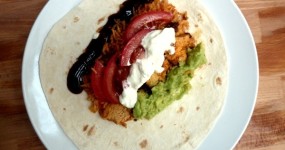 The quest for Mex part 2 – Feisty Chicken Burritos posted on December 21, 2010
The quest for Mex part 2 – Feisty Chicken Burritos posted on December 21, 2010  Sparkling Long Black posted on May 10, 2011
Sparkling Long Black posted on May 10, 2011 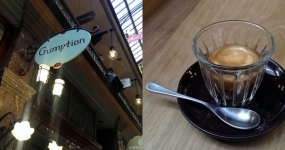 Gumption by Coffee Alchemy, Sydney CBD posted on December 13, 2013
Gumption by Coffee Alchemy, Sydney CBD posted on December 13, 2013 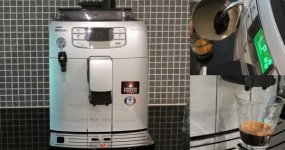 Review – Philips Saeco Intelia posted on January 10, 2012
Review – Philips Saeco Intelia posted on January 10, 2012  Salat Hatzilim posted on January 28, 2011
Salat Hatzilim posted on January 28, 2011  Eat. Drink. Blog. Dinner at Kingsley’s Steak and Crab House, Woolloomooloo – 5 November 2011 posted on November 11, 2011
Eat. Drink. Blog. Dinner at Kingsley’s Steak and Crab House, Woolloomooloo – 5 November 2011 posted on November 11, 2011 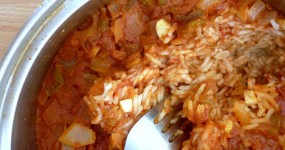 The quest for Mex part 1 – Mexican Red Rice posted on December 17, 2010
The quest for Mex part 1 – Mexican Red Rice posted on December 17, 2010 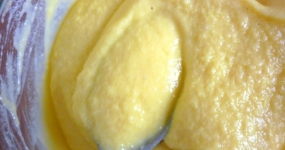 Rich Portuguese Custard posted on November 29, 2010
Rich Portuguese Custard posted on November 29, 2010
Disclaimer:
All opinions in this blog are mine, an everyday, real-life person. I do not accept payment for reviews and nor do I write sponsored posts. I do not endorse the content of the comments herein.

